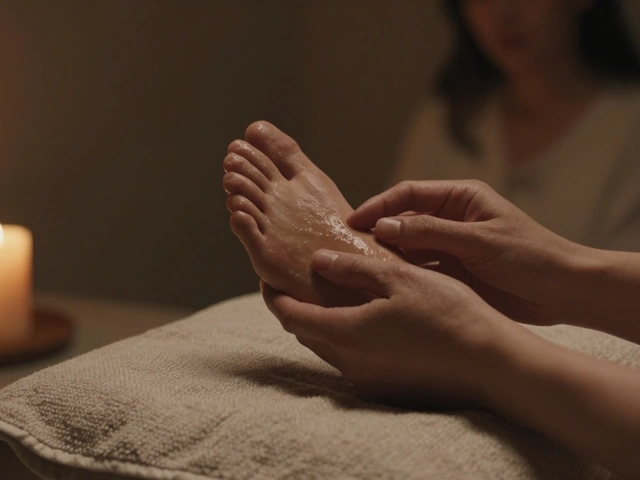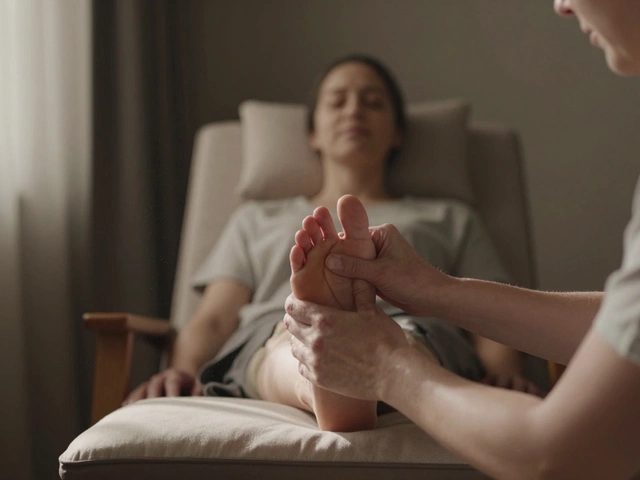Understanding Neuromuscular Massage
Neuromuscular massage, often regarded as a bridge between relaxation and physical therapy, dives deep into the layers of muscle and connective tissues to provide relief from pain, stress, and muscular dysfunctions. Unlike traditional massage therapies that primarily focus on relaxation and stress relief, neuromuscular therapy (NMT) targets specific areas of discomfort, applying techniques designed to address trigger points, circulation problems, nerve compression, and biomechanical issues.
Developed in the 1930s by Dr. Stanley Lief in Europe, neuromuscular massage blends the best of Eastern and Western philosophies. It incorporates knowledge of anatomy, neurology, and pathology to create a targeted approach to massage therapy. By understanding the body’s neuromuscular system, therapists can address specific health issues, provide effective pain management, and enhance the overall functioning of the body.
Principles Behind Neuromuscular Therapy
The effectiveness of neuromuscular massage stems from its core principles, which focus on understanding and manipulating the body's soft tissues to improve health. Key principles include targeting trigger points, enhancing circulation, and using specific techniques to relieve areas of strain. Trigger points, often described as knots within the muscle, can cause pain both locally and in distant areas. By applying concentrated pressure to these points, NMT can release tension and promote healing.
Additionally, NMT emphasizes the importance of proper circulation. Improved blood flow to affected areas enables the body to heal more efficiently by delivering oxygen and nutrients while removing waste products. This emphasis on circulation not only aids in recovery from muscular issues but also benefits overall health by supporting the body’s natural healing processes.
Techniques and Applications
In neuromuscular therapy, therapists employ a variety of techniques to achieve desired outcomes. These include but are not limited to, ischemic compression, myofascial release, and stretching exercises. Each technique serves a unique purpose, from releasing trigger points to improving flexibility and reducing stiffness in muscles. Therapists may use their hands, elbows, or tools to apply the correct amount of pressure and movement according to the client's needs and conditions.
Neuromuscular massage is versatile, proving effective in treating a range of issues including chronic pain, sports injuries, headaches, and stress-related conditions. By tailoring the therapy to the individual, NMT provides a customized approach to wellness that can significantly improve quality of life.
Benefits of Neuromuscular Massage
The benefits of incorporating neuromuscular massage into one's wellness routine are extensive. Beyond pain relief, NMT can improve posture, enhance athletic performance, and reduce the risk of injury by maintaining muscle health and flexibility. Additionally, the therapy offers stress relief and promotes relaxation, which can have a profound impact on mental health. The reduction of stress hormones in the body further supports healing and wellness.
From a physiological standpoint, NMT can improve circulation, increase joint mobility, and aid in the removal of toxins from the body. These benefits contribute to a stronger immune system, better sleep patterns, and an overall sense of well-being. It's a holistic approach to health that addresses the body and mind, demonstrating the interconnectedness of physical and mental wellness.
Integrating Neuromuscular Massage into Your Health Regimen
Integrating neuromuscular massage into your health routine requires finding a skilled therapist who is knowledgeable in the techniques and principles of NMT. It's important to discuss your health history and goals with your therapist to ensure the therapy is tailored to your needs. Depending on your objectives, sessions can range from focused, short-term treatments targeting specific issues to ongoing maintenance for long-term health and wellness.
Maintaining open communication with your therapist will maximize the benefits of neuromuscular massage. Feedback during and after sessions can help tailor the therapy to your evolving needs. Additionally, your therapist may provide you with exercises and stretches to do at home, enhancing the effectiveness of the therapy.
Conclusion
Neuromuscular massage is a powerful tool in the pursuit of health and wellness. By understanding its principles, techniques, and benefits, individuals can make informed decisions about integrating this therapy into their lives. Whether seeking relief from chronic pain, looking to improve athletic performance, or simply aiming to reduce stress, neuromuscular massage offers a holistic approach to achieving a better quality of life. Like any wellness practice, the key is finding what works best for you and your body’s unique needs. Embracing the healing power of neuromuscular massage can be a transformative step toward optimal health and well-being.








